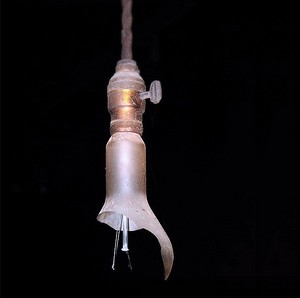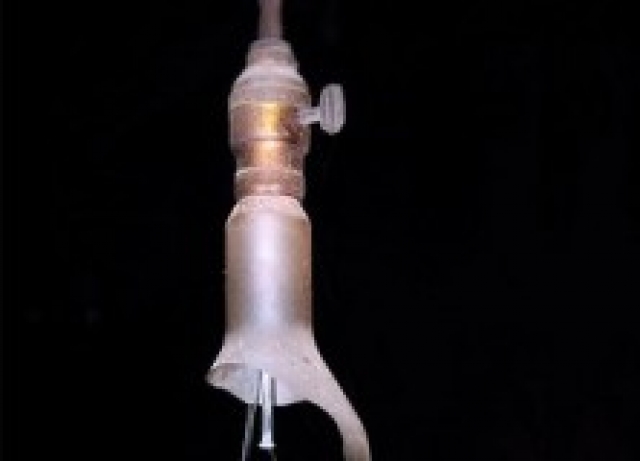 Back in February of last year I wrote about the approaching end of the incandescent light bulb. It was finally put to death on January 1st, 2014. That’s when manufacturing lines of incandescent light bulbs came to a halt in the U.S.
Back in February of last year I wrote about the approaching end of the incandescent light bulb. It was finally put to death on January 1st, 2014. That’s when manufacturing lines of incandescent light bulbs came to a halt in the U.S.
The incandescent light bulb can not be manufactured, or even imported into the U.S. any longer.
That means once the existing stockpiles of bulbs are sold, that will be the end. The 75 and 100 watt incandescent bulbs haven’t been manufactured for some time now. The last on the chopping block were the 60 and 40 watt bulbs.
Which is why I bought a 10 year supply for myself. About 6 months ago I found one 4-pack of 100 watt incandescent bulbs. It was a rare find even then and I bought them immediately. That’s why I stocked up on the 60 watt incandescent bulbs.
The ban was sought not by average Americans, who were perfectly happy with low-cost incandescent bulbs, but by Washington lobbyists.
Corporations saw the ban as a way to improve their bottom lines. Philips Electronics, one of the leading supporters of the ban, had already planned to phase out incandescent production by 2016, so prohibiting others from producing the cheaper bulbs prevented competition. General Electric (GE) took the occasion of the ban to close its last remaining U.S. incandescent-bulb factory, costing 200 jobs. Production of permissible bulbs is now taking place in China.
Currently, there are plenty of 60 and 40 watt bulbs still available, but they will disappear quickly once the mainstream news media does a story about the supply coming to an end because the manufacturing of them has stopped. Most of the American public isn’t even aware of the law put into effect by George W. Bush back in 2007.
Home Depot stated that they placed a large order with manufacturers earlier in 2013. They estimate they have enough in stock to last 6 months. Lowes has about the same extended outlook.
I’m all for energy saving, but let’s be honest. The CFL bulbs put out a lousy spectrum of light. I have trouble reading with one and their life expectancy doesn’t meet the hype. CFLs lose their luminosity over time and thus have to be replaced more often than expected. A 2003–2004 Energy Department study found that one-quarter of the CFLs tested had dropped below their rated output after just 40 percent of their expected lives.
They also can’t be dimmed unless a special dimmer outlet is used, or you pay a premium for a CFL bulb that has it’s own special ballast for dimming built into it. If you got in the habit of turning lights on and off frequently to save energy that is exactly what you should not do with CFLs. Once on, it’s recommended that you keep them on for at least 15 minutes, or you will shorten their life span.
While CFLs may be more energy efficient they aren’t exactly friendly to the environment.
Mercury is a key component of compact fluorescent light (CFL) bulbs, the most popular alternative to incandescent bulbs. Unless CFLs are handled and disposed of properly, they can release mercury into the environment. Broken CFLs require a complex clean-up process, according to the Environmental Protection Agency (EPA). Even when this process is followed, mercury can remain in the air and on the floor, where further agitation can drive it back into the air.
Spent CFLs should not be tossed in the trash, but recycled. However, not everyone is aware of that, and some who are aware of it simply don’t want to go to the extra effort of storing and transporting the bulbs. Thus, many CFLs end up in landfills, where their toxic contents can escape. CFLs may pose other health hazards as well, including increased risk of cancer and migraines and aggravation of light-sensitive skin conditions.
I’m using CFLs, but only in those areas that don’t need an incandescent light. Areas like my basement, attic, closets, and some overhead fixtures. When it comes to lamps and other areas where I need a good artificial light, I’ll be sticking with incandescent bulbs.
I figure in 10 years when my supply runs out, maybe LEDs will have improved and their cost will have come down.
Disclaimer: On January 4, 2016, the owner of WestEastonPA.com began serving on the West Easton Council following an election. Postings and all content found on this website are the opinions of Matthew A. Dees and may not necessarily represent the opinion of the governing body for The Borough of West Easton.







